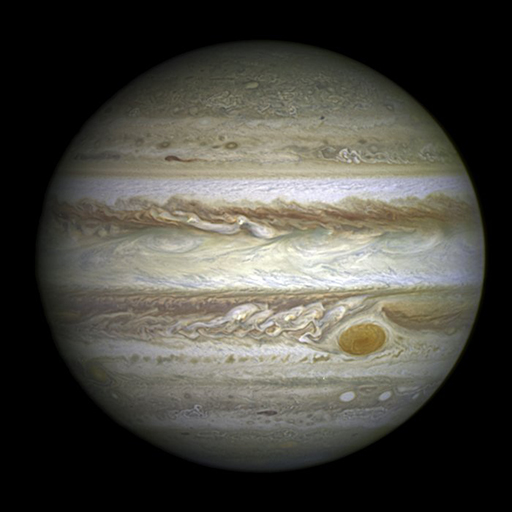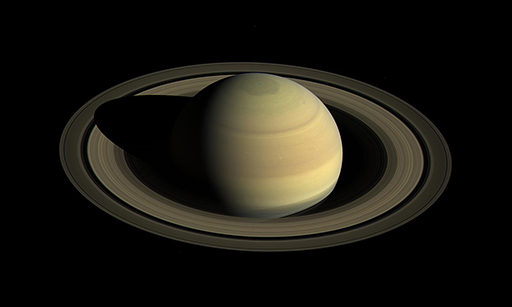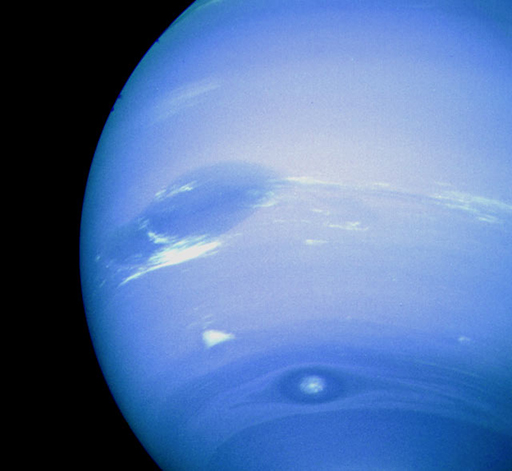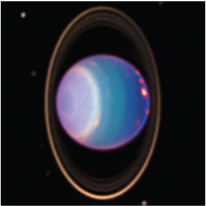6.2 Giant planets
Now take a look at these images of the giant planets.

Figure 19 Image of Jupiter taken by the Hubble Space Telescope showing the motion of its bands of clouds around the Great Red Spot

Figure 20 A spectacular image of Saturn and its rings, taken by the Cassini spacecraft in early 2016

Figure 22 Neptune, snapped by Voyager 2 in 1989. The (enhanced) beautiful blue colour is due to the presence of methane in outer regions of the planet.
Here is a wonderful video of Jupiter [Tip: hold Ctrl and click a link to open it in a new tab. (Hide tip)] in which images taken by amateur astronomers have been animated.

